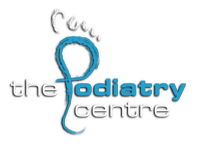Activating the Glutes.
During an assessment of a patient, i often have to check if the glutes are activating. In almost 90% of cases, i find people fail this test including runners, gym-goers, athletes, and fit-people. Everyone understands the concepts of exercising your glutes (butt muscles), but no one seems to understand that they need to be activated. This means people are doing the exercises and movements to focus on strengthening the butt, but in fact their not even switching it on to get the muscle working properly so they end up with tight hamstrings and hip flexors.
What Glute activation ?
Glute activation is simply firing of the glute muscle in a timely manner whilst performing the relevant exercise that utilises it such as, lunges, squats, lifts etc. We are very familiar with the glutes for many reasons: aesthetic (eg bikini bottom) , strength (eg burpees and dead lifts) , speed (running) , performance (ballet), balance and co-ordination (gymnastics). So we appreciate why they need to be strong and in a good condition. However, not many know that the glutes are not actually switching on in a timely manner to get the most out of their exercises.
Why is Glute activation important ?
If the Glutes do not squeeze and fire off in a timely manner, you end up using your hamstrings more to compensate, leading to tight hamstrings and also tight hip flexors. Our glutes are the strongest muscles in our body and help straighten our hips and rotate it out. They also contribute to good core stability and pelvic stability. This ultimately reduces the risk of lower back injury too. The best way to explain this is by saying lift up a heavy box, now if you do this without focusing on your posture and engaging your core muscles, you have a pretty good chance of hurting your lower back, so you need to focus and prepare your body for the effort it is about to undertake.
Why is Glute Delayed activation common ?
Our bodies were made to be moving in a very versatile and active manner from day to day. Through the centuries and particularly in to days society, we have very sedentary lifestyle. Even though we may hit the gym for an hour a day, we are in seated office jobs or inactive jobs. Our lifestyles do not engage our bodies to their full potential. So the good old saying, “if you don’t use it, you lose it”. A perfect example of a bad habit is the common practice to use our arms to lifts us out of a chair instead of using our butt muscles. With less use from day to day, our glutes then do not switch on properly when we decide to exercise, leading to imbalances and not achieving the firm strong butt that you are aiming for.
So how do you know if you have delayed activation of the glutes ?
Its hard to test for delayed activation on yourself. The method i use, which you can try at home with the assistance of another person, is to get the patient to lie down flat on their stomach, then ask them to raise their foot up (select right or left) keeping their knee straight. Whilst they raise their left foot only, I have my right hand on the hamstring muscles, and my left hand on the glute muscles. I feel for which muscles tightens first just upon initiating the foot raise. You are supposed to switch on the glutes first followed by the hamstrings. If your hamstrings switch on first, then you have delayed glute activation.
Glute activation exercises.
It is important that you do glute activation exercises to improve the activation. Simply doing glute strengthening exercises, does not focus on the activation.
This link, shows some helpful activation exercises to do at home. http://breakingmuscle.com/strength-conditioning/4-simple-exercises-to-get-your-glutes-fired-up
Helpful Hints :
-Whenever you do any exercise which is supposed to focus on your glutes, ensure you consciously make an effort to squeeze your glutes before you initiate the movement. This will activate the muscle, and in due course, your mind will make this a sub-conscious habit.
-When you run, ensure you squeeze your buttocks. You will naturally feel how much more power you generate in your stride and also how much more stable you feel.
– When you do squats or lunges or lifts, ensure you squeeze your butt muscles before you initiate the movement.
– Message of the day, SQUEEZE YOUR BUTT more often
Dr Vanessa Hadchiti (Podiatrist)
